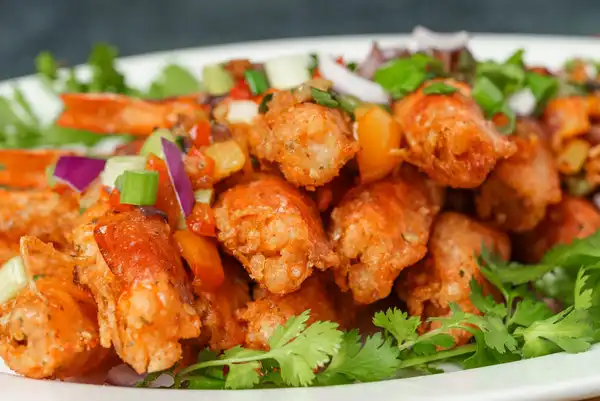Eat shrimp for luck and happiness
Shrimp is a popular protein in Cantonese cuisine, not only because it's so delicious and relatively easy to source, but also because it's auspicious. In Cantonese, shrimp is 蝦 haa1, which sounds like joyful laughter. Put this Salt & Pepper Shrimp on the table for lucky celebrations to ensure a future full of happiness and laughter!
A story about prosperity, with U.S. Bank
This Lunar New Year recipe is brought to you in part by U.S. Bank.
As a kid, I was so excited to receive $5 in my red envelopes. $5 was a lot for me, and even more for my parents, who worked long nights and weekends running their own restaurant.
“Wah Yuen” - that was the name of their restaurant, the name of their hopes and dreams.
As immigrants living the 80s and 90s, they just had to figure out how to find success on their own.
They didn't have the internet, and no one was really investing in the success and financial education of Chinese communities. They just made it work by being extremely frugal and with relentless sacrifice.
But, times have changed.
Ironically, my parents never wanted me to be in the food & restaurant industry. But lo and behold, I now run a successful business teaching millions of people how to cook on the internet. Maybe it’s fate - I come from a long line of restauranteurs (my paternal grandfather used to run a popular tea house in Guangzhou).
For me, as a Chinese American entrepreneur in today's world, managing our business and finances is much, much easier than it used to be, because we have so many more resources at our fingertips through organizations like U.S. Bank.
We’re really honored and excited to partner with U.S. Bank because they’re investing significantly into the AAPI community (not just through corporate lip-service.)
If you’re a business owner looking to understand business essentials, streamline operations, or need lending or coaching, check out their Business Banking offerings.
You can also get up to $600 cash when you open a new checking and savings account. Visit U.S. Bank’s 2023 Lunar New Year page to learn more.
Disclaimer: Subject to certain conditions and qualifications. Member FDIC.
Check out a quick story summary of our recipe!



